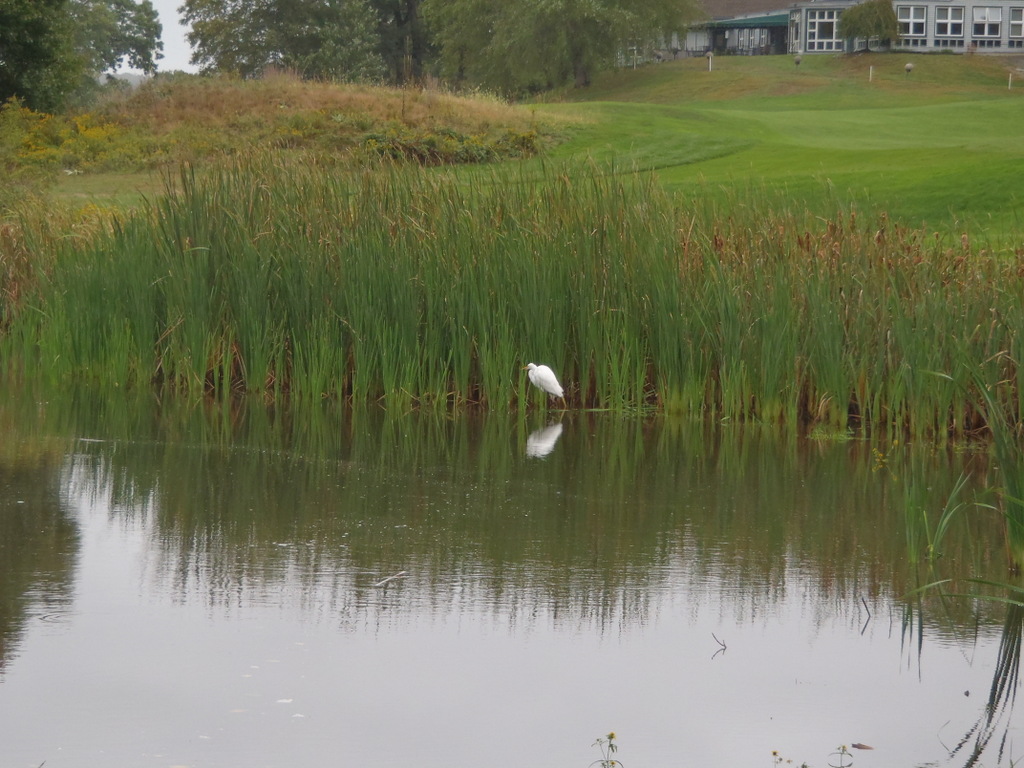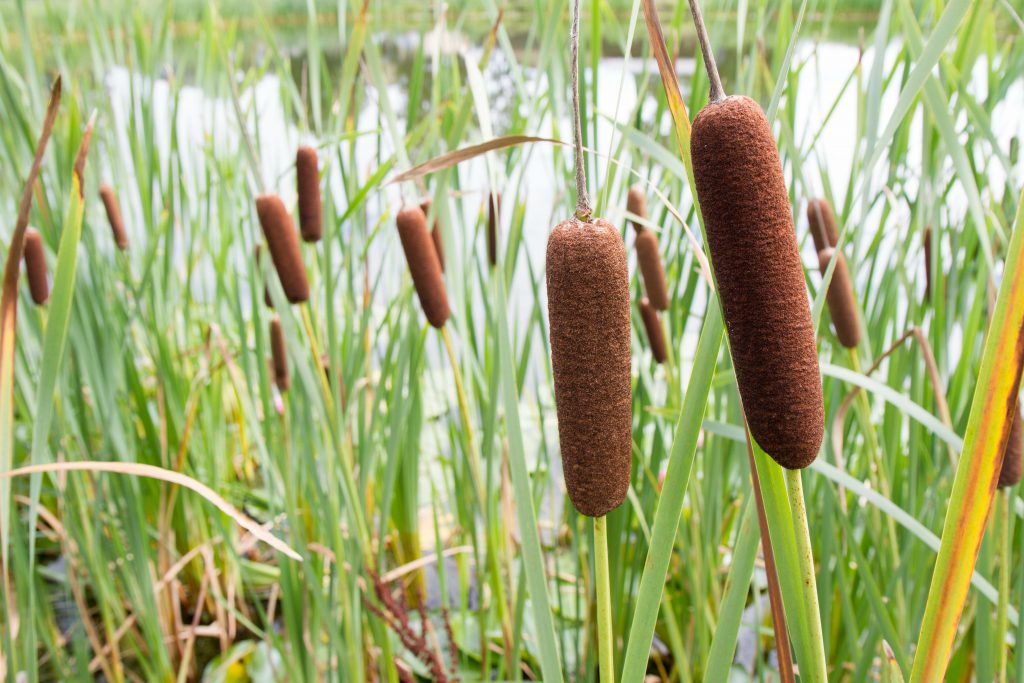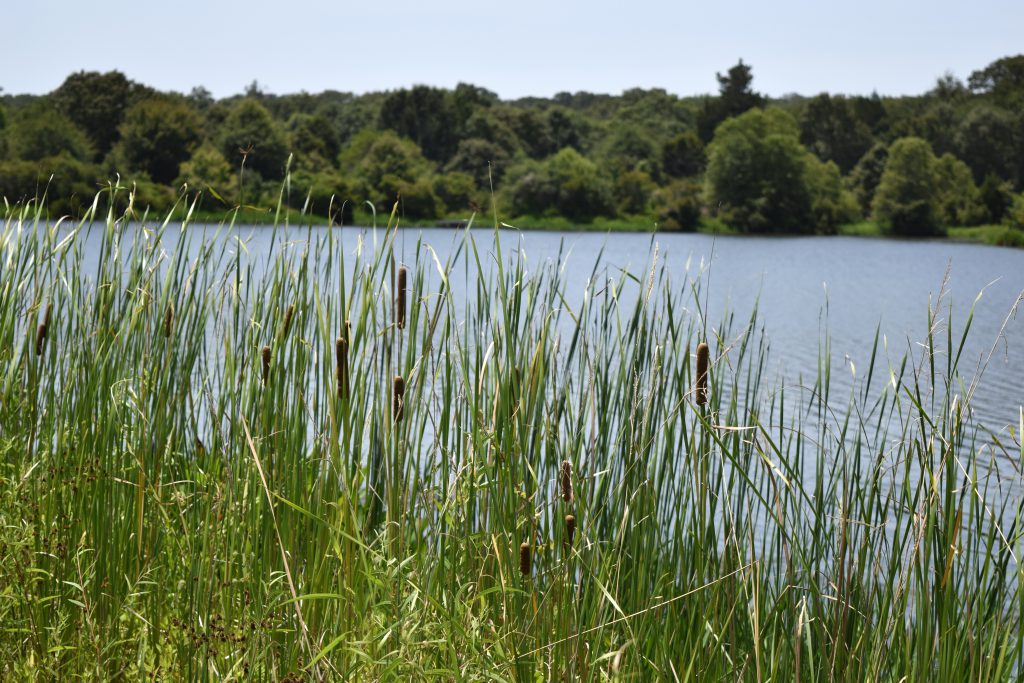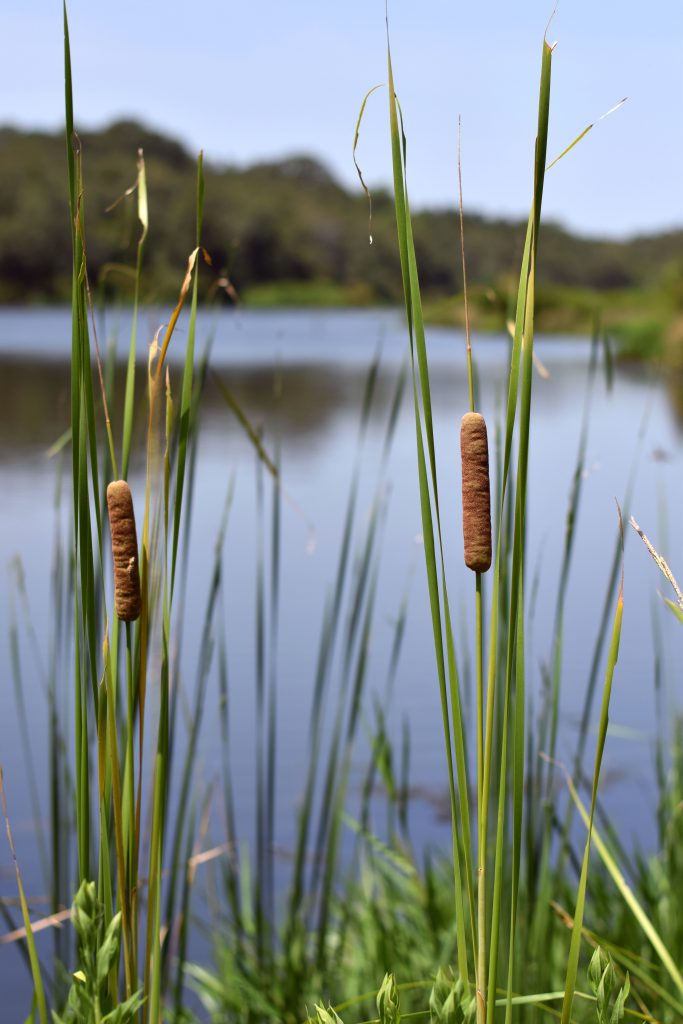

Are Cattails Good or Bad? How Can They Be Successfully Managed?
Written by Industry Expert Kara Sliwoski, Aquatic Biologist & Territory Leader
Perhaps you’ve heard of or seen cattails before—they’re an iconic plant associated with many types of waterbodies. Interestingly, they have the potential to be both good and bad for a body of water. Maybe you are concerned about cattail growth in your own waterbody and are looking for some answers, cattail facts and recommendations. Maybe you’d like to know how to get rid of cattails in a pond on your golf course or in your community. Regardless, you’ve come to the right place.
Cattails (Typha spp.) are a type of aquatic plant, approximately 5-10 feet tall. These plants have long, slender, branchless and upward-growing leaves and a distinguishable brown, cylindrical flowering head at their apex. Similar to other emergent aquatic plants, cattails create expansive underground rhizome (root) systems. Cattail ponds are often viewed as iconic because they are so common and widespread, and can be aesthetically pleasing. Capable of growing in various aquatic habitats, cattails can be found in and/or around small and large waterbodies, wetlands, and even detention ponds around the world. Currently, there are about 30 different species of cattails worldwide, with four of those species present in North America.
When growing within a larger waterbody, cattails can be a beneficial species to have and are often encouraged by professional lake managers. Scattered shoreline patches of cattails provide excellent habitat to both resident and migratory birds, as well as some aquatic and semi-aquatic organisms, depending on the environmental characteristics. Cattails are often a sign of a transitioning environment because where they grow is often where land changes from wet to dry habitat. As such, cattails are a great plant to use when creating a shoreline buffer to prevent erosion and minimize nutrient input into the waterbody; the cattails can utilize those nutrients before they have an opportunity to enter the water and promote unwanted algae or submersed plant growth. They can be used for other purposes as well; various parts of the plants are edible and the stalks have been used to make baskets, mats, and rope by indigenous communities.

At the same time, cattails can also be a nuisance species, especially within smaller ponds. As cattails have a large rhizome system that is capable of rapidly expanding within shallower water depths, they can easily encroach upon a small waterbody. Most cattail species found in North America are native to the area, but their growth can become dense and potentially outcompete other native plants to create a cattail monoculture. Not only does a monoculture reduce species richness within a waterbody, but it also decreases available open water habitat for other species utilizing the environment. Ironically, an abundance of cattail growth at a waterbody actually attracts muskrats as they eat and utilize the plant material for creating their lodges; however, muskrats can be incredibly destructive, prolific and generally unwanted. Less open water habitat can also attract mosquitoes in search of new stagnant breeding waters. Even if cattail growth is localized to a small pond’s shoreline, if dense and completely around the pond, access to the water is severely reduced for transient birds and wildlife, as well as for recreational activities.
So, you think you’ve got a cattail problem and aren’t sure what to do or what your options may be? Are you considering how to kill cattails in a pond on your property? First and foremost, call your local lake and pond management professionals to assess the extent, composition, and distribution of the growth, as this information will be essential in determining if control is warranted and which strategy is the most appropriate one for your situation. Although you may want to remove them completely, eradication of a native species is not usually encouraged. Fortunately, cattail control is possible. The species can be maintained at non-nuisance and even beneficial conditions in order to balance all interests.
Two primary management options are available for cattail removal: treatment with aquatic herbicides or mechanical removal:
Control via aquatic herbicide treatment can be achieved by a licensed professional applying the appropriate US EPA and State approved herbicide(s) directly onto the leaves of the plant. Herbicide treatments are usually the more cost-effective option available, while providing species-selective and systemic control; however, the dead plant material stays on site for several seasons following treatment until it decomposes or is physically removed.

Mechanical removal can be accomplished by utilizing a hydro-rake (essentially a floating backhoe with a rake attachment). A hydro-rake facilitates the removal of the expansive root systems associated with the area(s) of unwanted cattails, in addition to removing the cattails themselves. Hydro-raking is a viable option if use of herbicides is not desirable within an area, although the hydro-rake has more limiting logistical requirements and is not species selective.
Ideally, a combination of the two techniques can maximize overall efficacy and sustained long-term control, while minimizing system impacts over the long-term. Always keep in mind that local state and municipality regulations may apply and it is worth consulting your local environmental regulatory body before beginning any work.
Unfortunately, there’s no one perfect answer to whether cattails are good or bad, as the dilemma is very situationally dependent. Good or bad, a healthy balance of aquatic vegetation and the overall dynamic aquatic ecosystem should be the ultimate goal of any pond or lake management endeavor. By working together with your local aquatic management specialists to better understand your cattail growth, an appropriate and environmentally responsible management plan can be tailored to meet your specific goals and situation.
SOLitude Lake Management is an environmental firm committed to providing full-service solutions that improve water quality, preserve natural resources, and reduce our environmental footprint. Our services include lake, pond, wetland and fisheries management programs, algae and aquatic weed control, mechanical harvesting, hydro-raking, installation and maintenance of fountains and aeration systems, water quality testing and restoration, bathymetry, lake vegetation studies, biological assessments, habitat assessments, invasive species management and nuisance wildlife management. Services, consulting and aquatic products are available to clients nationwide, including homeowners associations, multi-family and apartment communities, golf courses, commercial developments, ranches, private landowners, reservoirs, recreational and public lakes, municipalities, parks, and state and federal agencies. Learn more about SOLitude Lake Management and purchase products at www.solitudelakemanagement.com









